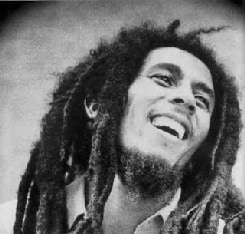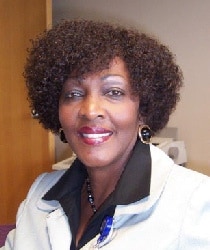In Search of Inspiration: Robert Nesta Marley


By Spence Finlayson
NASSAU, Bahamas – Inspiration is all around us on this universe. We don’t have to look very far.
As a matter of fact we go to beautiful Jamaica and the birthplace of Robert Nesta Marley for our dose of inspiration in this article.
I had the privilege of interviewing two of Jamaica’s singing superstars, Luciano and Shaggy at the Hilton Hotel in Kingston for my Bahamas based , international motivational television show Dare To Be Great a few years ago.
However, I am saddened to say that I had never met the one and only Robert Bob Marley.
I was first introduced to Bob Marley’s music in a big way by my college roommate and later benefactor Rollin Jackson Sr from the Cayman Islands while we were students at the Bahamas Hotel Training College from 1975 to 1977.
Jackson knew all of Bob Marley’s songs and even his dance moves. I must admit I was never a terrific dancer, I have been told by close friends that I dance like the Temptations, my all-time favorite singing group. So my buddy Rollin Jackson became a star in Nassau in the local clubs with his ability to dance to reggae songs.
Bob Marley was born on February 6th, 1945 to Cedella Marley when she was 18. His early life was spent in the rural community of Nine Miles, which was nestled in the mountainous terrain of the parish of St. Ann.
Norval and Cedella married in 1945 but Captain Marley’s family did not approve of their union.
While barely in his teens Bob Marley left St. Ann and returned to Kingston and he eventually settled in Trench Town, aptly named because it was built over a sewerage trench.
It was a low income community which was comprised of squatter –settlements and government yards developments that housed a minimum of four families.
Bob earned the respectable nickname Tuff Gong for his ability to defend himself against Trench Town’s rude boys and bad men, with his formidable street-fighting skills.
Trench Town was also culturally rich community where Bob Marley was able to nurture his colossal musical gifts and talents.
Trench Town was a lifelong source of inspiration for him and he immortalized Trench Town in his songs “No Woman No Cry” which is one of my favorite Marley tunes along with “Could You Be Love’, “Get Up Stand Up “ and We Jammin.”
In the early 1950’s the island of Jamaica’s music industry was begging to take shape and its development gave birth to an indigenous popular Jamaican music form called ska., which was an interpretation of American soul and R & B.
Bob met another aspiring singer Desmond Dekker at age 16 who would go on to top the UK Charts in 1969 with his single “Israelites’ which was played very often on the Bahamas Government Owned radio station ZNS.
Dekker then introduced Bob Marley to another young singer, Jimmy Cliff , who later starred in the immortal Jamaican film “The Harder they Come” and had a huge hit with “Many Rivers To Cross” which is a very inspirational song.
I still play it today from time to time for great inspiration and motivation.
In 1963 Bob Marley and his childhood friend Neville Livingston a.ka. Bunny Wailer began attending vocal classes held by Trench Town resident Joe Higgs, a successful singer who mentored many young singers in the principles of rhythm, harmony and melody. In his Trench Town yard, Higgs introduced Bob and Bunny to Peter (Macintosh) Tosh and the Bob Marley and the Wailers legend was born. The trio quickly became good friends so the formation of a vocal group, The Wailing Wailers, was a natural progression. Higgs played a pivotal role in guiding their musical direction. The other members of the Wailing Wailers included Junior Braithwaite, Beverly Kelso and Cherry but they departed after just a few recording sessions.
By the mid-60’s the jaunty ska beat had metamorphosed into the slower paced rock steady sound, which soon gave way to Jamaica’s signature reggae rhythm circ 1968.
In 1966 Cedella Booker decided to relocate to Delaware and that same year Bob Marley and Rita Anderson were joined in holy matrimony.
While Bob Marley was away from his beloved Jamaica, His Imperial Majesty Emperor Haile Selassie I visited the island in April of 1966, and his visit to Jamaica had a huge impact on Bob and Rita. Bob then adopted the Rastafarian way of life and began wearing his hair in dreadlocks.
Bob Marley went to Sweden to collaborate on a film score with American singer Johnny Nash who later recorded the hit song “I can See Clearly Now’.
After securing a contract with CBS record label in 1972, they met with more disappointment as CBS had little faith in Marley and the Wailers and abruptly abandoned the group in London while they were promoting their single “Reggae on Broadway”.
Bob Marley could easily have given up and return to his native Jamaica but he was determined to succeed and he paid a chance visit to the London office of Island Records and the result was a meeting with the label founder Chris Blackwell.
Chris Blackwell advance the group 4,000 pounds to record an album, which was an unheard of sum to be given to a Jamaican act.
I had the good fortune of meeting Chris Blackwell in Nassau where he operated the famous Compass Recording Studio where my nephew Douglas Wimbish, of Hartford, Connecticut, a top bass guitarist, performed as a studio musician for Mick Jagger and The Rolling Stones when they recorded.
Jimmy Cliff who was Island Records to reggae star left the label, Chris Blackwell as Marley as the right artist to replace him and fill that void and attract an audience primed for rock music.
Chris Blackwell reportedly said “I was dealing with rock music and I felt that would really be the way to break Jamaican music. But you needed someone who could be that image. When Bob walked in he really was that image.” They delivered their “Catch A Fire “Album in April of 1973 to extensive international media fanfare.
Tours of Great Britain and the United States were quickly arranged and the life of Bob Marley was forever changed.
Bob Marley was on his way to greatness. They even opened for a relatively unknown Bruce the Boss Springsteen in New York City, They even toured with the legendary Sly and The Family Stone, who were at their peak in the early 70’s with hits like “I want To Take You Higher, “Family Affair‘ and “Dance To The Music”, but the Wailers were removed after just four dates because their riveting performances, reportedly , upstage the headliner.
Following the successful “Catch A Fire “tour the Wailers promptly recorded their second album for Island Records,”Burnin’ which was released in October 1973.
Their timeless anthem of insurgency “Get Up Stand Up “ came from this album along with “ I Shot the Sheriff’ which was later covered by Eric Clapton which went to the top of Billboard Hot 100 in 1974 and elevated Bob Marley’s international profile.
In the Caribbean, Bob Marley achieved truly superstar status. When he came to Nassau, Bahamas to perform in concert at the old Queen Elizabeth Sports Centre, huge crowds attended and the Rastafarian movement took root.
Every young person wanted dreadlocks like Bob Marley and they knew all of the lyrics to all of his songs not only the hits.
His third album for Island Records was released in October of 1975, called “Natty Dread’ and it was the first credited to Bob Marley and the Wailers. The harmonies of Peter Tosh and Bunny Wailer who had left the group were replaced with the soulfulness of the I-Threes, Rita Marley Marcia Griffiths and Judy Mowatt.
“Natty Dread” was a commercial as well as a critical success it peaked at #44 on Billboard’s Black Albums chart and #92 on the Pop Albums chart.
“Natty Dread’ album was characterized by spirituality and social conscious lyrics and included a rousing blues-influenced celebration of reggae,”Lively Up Yourself” which Bob used to open many of his concerts.
The following year Bob Marley began a very successful European tour in support of “Natty Dread” which included two nights at London’s Lyceum Theater.
He catapulted to international stardom in 1976 with the release of “Rastaman Vibration’ his only album to reach the Billboard Top 200, peaking at #8.
“Rastaman Vibration “presented a clearer understanding of Rastafari teachings to the mainstream audience that was now attentively listening to Bob.
His influence upon various populations remain unparalleled, irrespective of race, color or creed. He was regarded as a global reggae ambassador who had internationally popularized Rastafarian beliefs.
I believe that Robert Nesta Marley single handedly changed the musical landscape with reggae and he has inspired millions in the process. He is an Icon who only lived a short time on this earth.
While living in London he recorded “Exodus” album which called for social change, ‘the movement of Jah people, incorporating spiritual and political concerns into its amalgam of reggae, rock and soul –funk.
And so I close this chapter with a part of the address by the Prime Minister of Jamaica, the Hon. Portia Simpson-Miller during the National Heroes Day; “We all know that Jamaica has for a long time been identified with world class and world leading entertainment as the natural mystic of reggae has held sway in every corner of the globe. The names of Bob Marley, Peter Tosh, Jimmy Cliff and so many other Jamaican artistes have been placed on the tongues of successive generation of diverse nationalities. Let us believe, live and declare the words of National Hero Right Excellent Norman Washington Manley who said: “I affirm of Jamaica that we are a great people.
Out of the past of fire and suffering and neglect, the human spirit has survived patient and strong , quick to anger, quick to forgive, lusty and vigorous , but with deep reserves of loyalty and love and deep capacity for steadiness under stress and for joy in all things that make life blessed and good.’
This is the positive story of the Jamaican people. This is our heritage. This is the essence of Jamaica, to the world, Jamaica, land we love.
One love.


